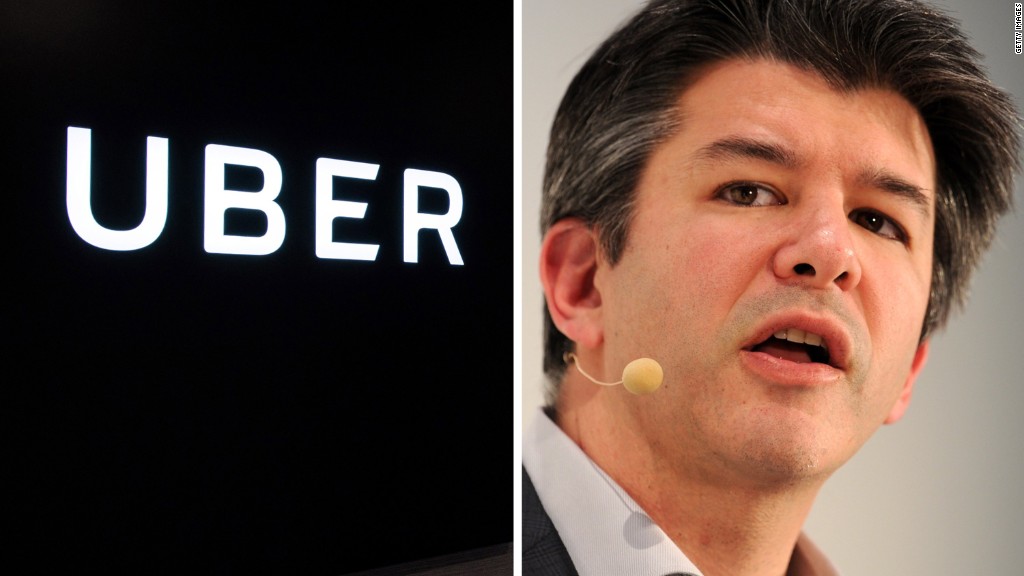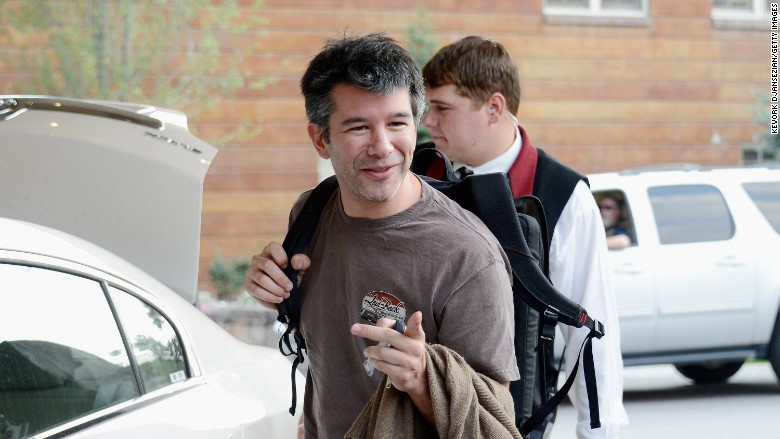
Travis Kalanick spent most of the past decade turning a taxi app into the world's most valuable startup.
But his ride as CEO of Uber came to an end Tuesday when he resigned after a seemingly endless series of scandals raised doubts over his leadership.
Here's a look at the highs and lows of the controversial entrepreneur's career:
Before Uber: As an undergrad, Kalanick teamed up with fellow UCLA computer science students to create Scour, a peer-to-peer file sharing service that resembled Napster. It didn't last.
But he had caught the entrepreneurship bug, and went four years without taking a salary at his next startup, another peer-to-peer network called Red Swoosh.
Kalanick has said that he ate a lot of ramen noodles during those lean years. He would later wear socks emblazoned with the words "Blood, sweat and ramen."
Red Swoosh was sold for about $15 million in 2007.
2008: Kalanick claims that he came up with the idea for Uber when he was unable to flag down a taxi in Paris during a tech conference.
But that may be more creation myth than fact.
Garrett Camp, another serial entrepreneur, came up with the idea for Uber in mid-2008 after getting "blacklisted" by the two big cab companies in San Francisco, according to a recent book by Adam Lashinsky. Camp brought on Kalanick and three other friends as advisers.
2010: Uber officially launched in San Francisco in May 2010 and Kalanick joined the company full time as CEO in December 2010.
"I'm frickin' pumped to be on board full-time with Uber!" Kalanick wrote at the time.
Kalanick did much to shape the firm, pushing Camp away from the idea that Uber should purchase its own cars. He also drove Uber's vast fundraising machine.
The pugnacious CEO's management style helped the company bulldoze its way past legal obstacles, including taxi owners who argued that Uber wasn't abiding by local laws in many places.
2011: Uber expanded to New York City and Paris while billing itself as "Everyone's Private Driver."
Rap mogul Jay-Z and Amazon (AMZN) founder Jeff Bezos became early Uber backers, helping the company raise over $40 million.

2013: Uber quickly became a disruptive force in dozens of cities around the world. Its valuation -- $3.4 billion -- reflected optimism about the firm's ability to expand at a breakneck pace.
But lawsuits plagued Uber as it expanded. Several cities took legal action to try to shut the firm down because of the threat it posed to the traditional taxi industry.
Kalanick said the company was spending $1 million per year on legal costs.
"We have three attorneys on staff at Uber and then we have law firms around the world that we work with. Probably 50 different law firms," he said in December 2013.
He also brushed off talk of taking Uber public and said he wanted to lead the company for years to come: "Uber is my wife and I have no mistresses," he said.
2014: Uber was valued at $18 billion in June after raising more than $1 billion from institutional investors. A second round of fundraising at the end of the year boosted the valuation to $40 billion.
Kalanick was by then a billionaire -- on paper at least. Forbes estimated his net worth at $3 billion in September 2014.
Uber expanded to more than 100 cities, but lawsuits and scandals highlighted concerns over rider safety, driver screening and aggressive business practices.
An Illinois woman filed a lawsuit against Uber claiming that a driver fondled her. The company was banned from operating in New Delhi, India, after a driver raped a passenger.
2015: Uber seized the crown of world's most valuable startup with a $51 billion valuation, but Kalanick continued to resist calls to take the company public.
Meanwhile, there was growing public anger over Uber policies that categorized drivers as contractors and not employees.

2016: Uber settled two legal suits brought by drivers in California and Massachusetts who sought to be classified as employees. Uber insisted that many drivers want to be their own boss.
2017: Kalanick faced a huge outcry after he joined President Trump's team of business advisers. He dropped out weeks later.
It was the first in a series of scandals in 2017. Soon, a video would surface that showed Kalanick berating an Uber driver who was frustrated over the company's rates.
But the bombshell landed in February, when former Uber engineer Susan Fowler published a blog post accusing the company of rampant sexism.
Kalanick announced that former Attorney General Eric Holder would investigate the allegations. But #DeleteUber was becoming a frequent trending topic on social media.
In early June, Kalanick's right-hand man Emil Michael left the company.
Michael had visited an escort bar in South Korea with Kalanick and other employees in 2014. He was also said to have been one of the executives who viewed medical records of a woman who had been raped by an Uber driver in New Delhi. The victim sued Uber for a second time after it was reported that executives viewed her medical records.
Meanwhile, Holder released a damning report on the firm's management culture.
Just weeks later, Kalanick's mother was killed in a boating accident and he took a leave of absence.
But investors had had enough. Kalanick released a short statement following his resignation:
"I love Uber more than anything in the world and at this difficult moment in my personal life I have accepted the investors request to step aside so that Uber can go back to building rather than be distracted with another fight," he said.
Kalanick will hold on to his billionaire status. He still has a large stake in Uber and stands to make a killing if the company goes public. He's also retaining his seat on Uber's board.
-- Seth Fiegerman and Aimee Rawlins contributed reporting.

